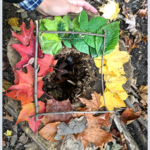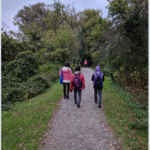Forest Bathing
Two years ago, in my newsletter I encouraged you to live in harmony with nature in Survival of the Kindest and mentioned the health benefits of Shinrin-Yoku, the Japanese Art of Forest Bathing. In the January issue of 2022, I once again encouraged you to practice forest bathing in my article about Finland, On Becoming the Happiest Country in the World.
Now when a friend mentioned I should write about forest bathing last month, I decided it was time to dedicate some real effort to sharing with you about the importance of this incredible, and free, health practice.
Why Forest Bathing?
In the 19080s, the Japanese began Shinrin-Yoku in response to the growing demands of technology on humans. Needless to say, the practice of forest bathing continues to gain in popularity with people of all ages as does technology.
If you Google “forest bathing,” you’ll find countless articles and videos online. I’ve read many and watched a few videos. Lifehacker produced Why You Should Try the Japanese Art of Forest Bathing. They explore the benefits of forest bathing using the backdrop of their meandering through the forest. Yoshifumi Miyazaki, a Grand Fellow at Chiba University who studies the connections between nature and humans, joins writer Nick Douglas for a scientific discussion on this art of bathing. Check out their discussion. (Do not have on the closed caption, because it just gets in the way.)
An Experience of the Mind versus the Body
I decided I wanted more information and chose to read:
Forest Bathing: How Trees Can Help You Find Health and Happiness
by Dr. Qing Li, published April 17, 2018, Penguin Life
The book, Forest Bathing, is an easy read with beautiful photos to illustrate the art. Dr. Qing Li explains that forest bathing is opening up your mind to the beauty of nature around you. This practice is mental verses physical. You’re not going on a hike to move through nature. You’re going on a walk to observe and feel nature.
It’s a walk-in nature where you smell the leaves, touch the bark, and look up to see the tree limbs sway in the breeze. This single act of awareness could take five minutes to thirty minutes or more until you meander to the next place you want to rest and connect. You want to be present in the moment — to relax and observe with all your senses.
Dr. Li’s research findings supports that just two-hours of forest bathing releases high blood pressure in almost everyone. There’s lots of research on the benefits of forest bathing. In addition to reducing blood pressure, research has found that it:
-
-
-
-
- Lowers stress
- Improves cardiovascular health
- Lowers blood sugar level
- Improves concentration and memory
- Lifts depression
- Improves pain thresholds
- Improves energy
- Boosts the immune system with an increase in the count of the body’s natural killer cells
- Increases anti-cancer protein production
- Helps you lose weight
-
-
-
Dr. Li also discusses the different kinds of trees and how they offer different kinds of healing. The book is an easy read and I highly recommend it.
Find a piece of Nature to find Shinrin-Yoku
If you do not live near a forest, find a park, your backyard, or anywhere trees grow, or anywhere you can connect with nature. Even your plants in your home can help you experience the calming effects of nature. Touch, feel, smell, watch, and taste — if you know what you’re eating.

This photo shows a natural art sculpture found on the forest bathing trail at Rouge Valley Park in Markham, Canada.
Shinrin-Yoku in Toronto
We are fortunate in Toronto. Our Botanical Gardens has a certified Forest Bathing Therapy Guide who leads tours throughout the year. Their trails provide many opportunities for you to connect with nature.
The City of Markham has self-guided forest bathing trails in four of their parks. You will find them at:
-
-
-
- Pomona Mills Park (200 John Street, John Street and Bayview Avenue)
- Rouge Valley Trail (120 Rouge Bank Drive, 14th Avenue and Legacy Drive)
- Springdale Park and Valley (45 Norwich Drive, 16th Avenue and Markham Road).
- Toogood Pond Park (280 Unionville Main Street, Carlton Avenue and Main Street Unionville)
-
-
Health and Happiness
According to Yoshifumi Miyazaki, Shinrin-Yoku is not about curing an illness, it’s about “creating a body that’s strong against becoming ill.” Getting your energy in balance through bioenergy therapy is also about improving your body, mind, and spirit to protect you from illness.
Forest bathing and bioenergy therapy are two natural ways to improve your health and wellbeing.
When you feel good, you’re just happier.
Take care,
~~Ellen

